Celebrate Valentine’s Day with this sweet floral arrangement! This vase-within-a-vase centerpiece is sure to spark conversation and offers a new take on the traditional Valentine bouquet.
- Conversation heart candies (I purchased these at Dollar Tree.)
- Fresh cutflowers in pastel colors to complement the candies
- Vase (I used a small “orb,” or fishbowl vase, from Dollar Tree.)
- Smaller vase that inserts into the larger vase (I used bouillon cube jars, with label removed – and kept the bouillon cubes for my slow cooker.)
- Watering vessel with water
- Scissors or pruners
- Valentine’s embellishment, optional (I used heart floral picks from Dollar Tree – 7-count package for $1.00 – and card picks with Valentine cards purchased from wholesale floral supply.)
*Note: The plastic wrap shown in some of the photos was used to help participants transport their arrangements home, without splashing water onto the candy. The plastic was removed once participants got home.
Step-by-Step Instructions
Insert the smaller vase into the center of the larger vase.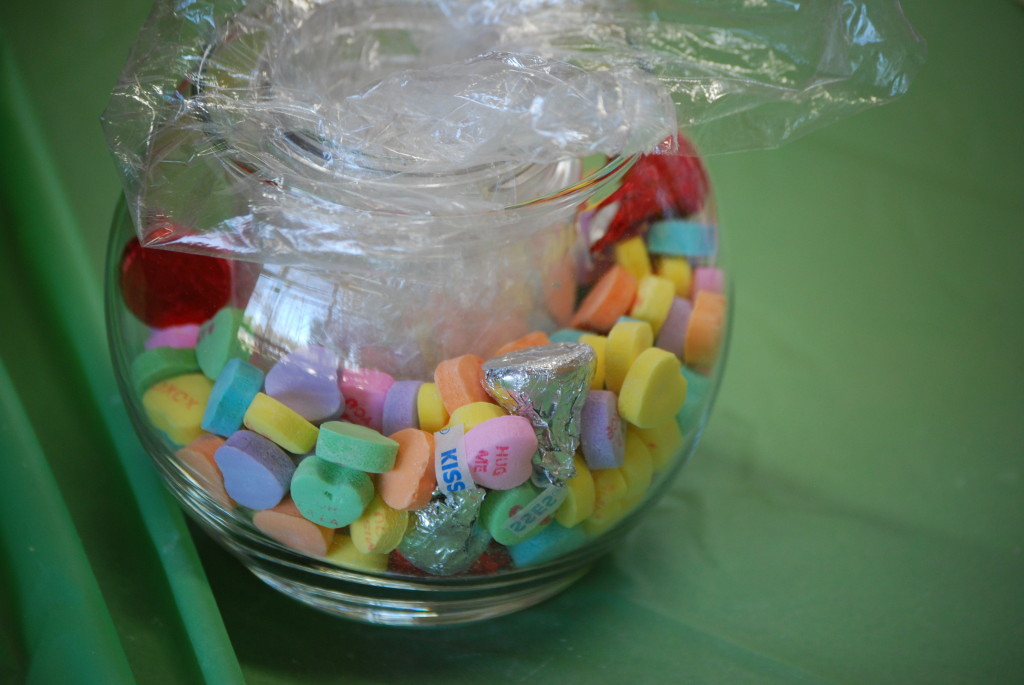
Add conversation heart candies around the outside of the inner vase. Fill candies to just below the top of the inner vase.
Fill the inner vase about one-third to one-half with water. (Later, you can top off or refresh water as needed.)
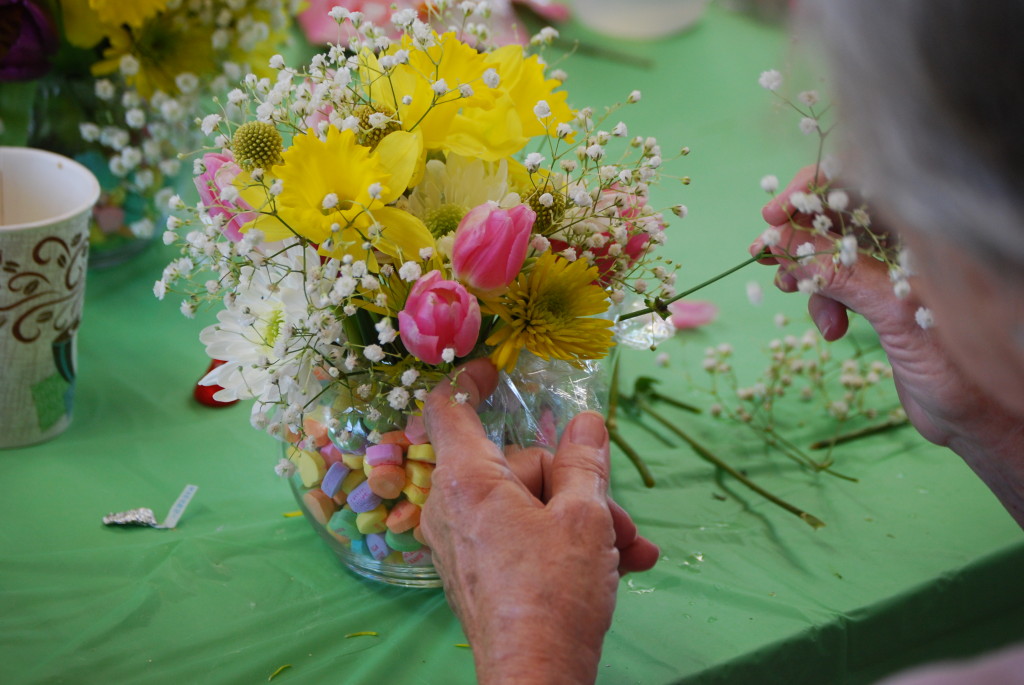 Cut flower stems and insert stems into the inner vase, taking care not to splash the water onto the candies. Keep adding stems until arrangement is complete.
Cut flower stems and insert stems into the inner vase, taking care not to splash the water onto the candies. Keep adding stems until arrangement is complete.
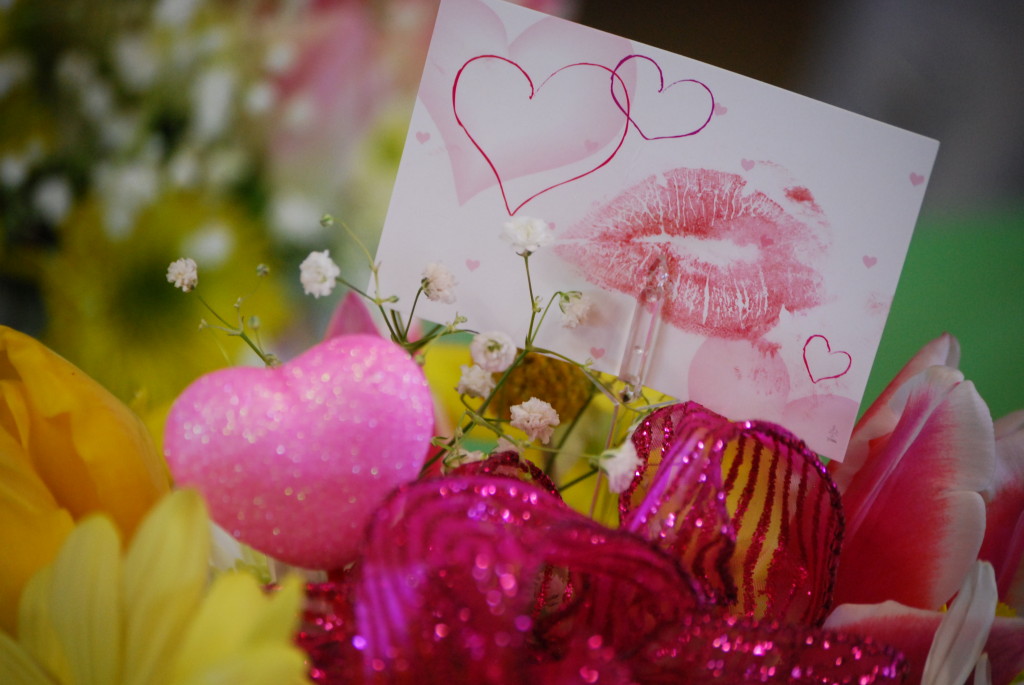 Optional step: Add Valentine embellishments to complete arrangement.
Optional step: Add Valentine embellishments to complete arrangement.
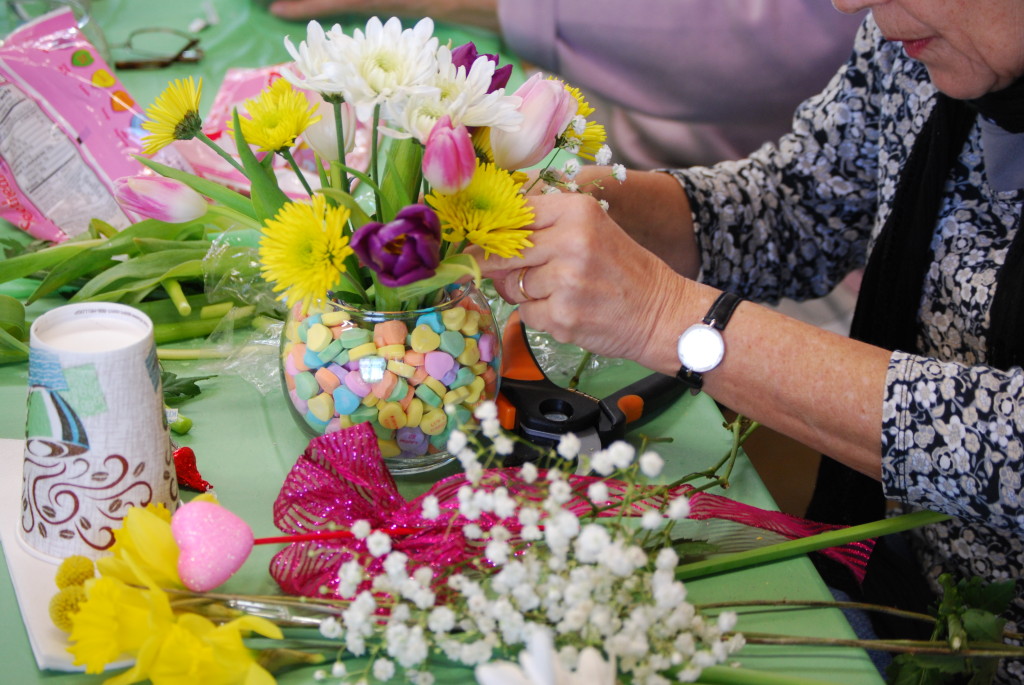 Notes for Horticultural Therapy Practitioners…
Notes for Horticultural Therapy Practitioners…
Floral arranging is a high impact, quick results activity for clients and, as a result, is particularly rewarding for my groups in memory care. I am often able to entice reluctant individuals to participate by encouraging them to make an arrangement for a spouse, friend, or family member. Or, for those who don’t consider themselves to be creative or talented enough to exercise their floral arranging skills, I offer assistance and work as part of a “team,” with the client as “teamleader” or “supervisor,” to complete an arrangement. With encouragement throughout the activity, even the most reluctant men, who have never made floral arrangements before and often “pooh-pooh” this type of activity at first, are able to successfully and proudly create their own arrangements. Sometimes the reluctant participants are the most proud of their final products.
I offered this particular activity to my clients who are active seniors living at home or in independent living communities. For my clients in memory care communities, I offered floral arrangements with a different take.
Contraindications
Prior to using any edibles in activities, double check with agency and medical staff on the appropriateness of their use. In some cases, staff may prefer to avoid using any edibles due to dietary and other restrictions.
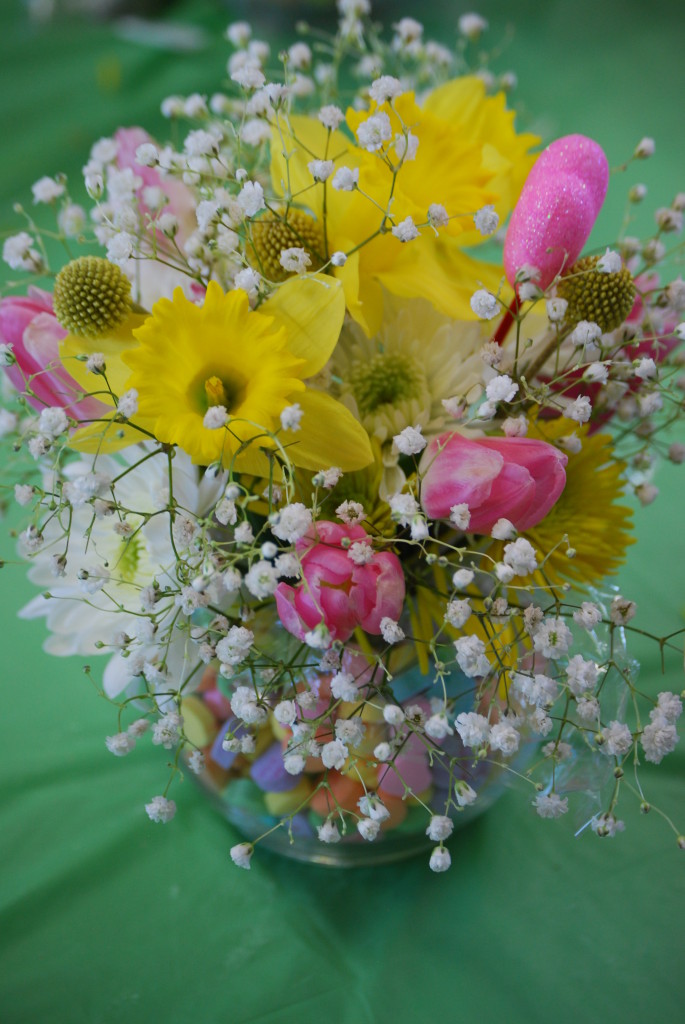 Use non-toxic flowers in situations where clients could possibly ingest flowers. Some of the flowers shown here, including Billy balls, daffodils, and tulips, may have toxicity.
Use non-toxic flowers in situations where clients could possibly ingest flowers. Some of the flowers shown here, including Billy balls, daffodils, and tulips, may have toxicity.
Consider safety needs of clients when determining whether to use scissors, pruners, or none of the above. Use pre-cut stems or flowers that break easily with fingers.
Program Notes
Activities using fresh cutflowers can easily get expensive. See my Budget Buster Tips on how to cut costs below. I have also found that sometimes clients have a hard time sharing materials with each other. In some cases, this is a good exercise in encouraging clients to share and cooperate with each other. In other cases, I try to minimize opportunities for severe clashing by pre-sorting and bundling flowers or posting a list with flower quantities allotted per person. With the latter, I may pre-sort the specialty flowers, of which quantities are limited, and give these bundles to each person, then the “filler” flowers, of which quantities are more abundant, are made available for all to peruse. In both cases, I encourage clients to share and swap with each other.
To transform this activity for a different season or upcoming holiday, substitute the conversation hearts for candy corn at Halloween or peppermint candies at Christmas. Or, swap with non-edible elements, like aquarium gravel, festive table scatter (a.k.a. confetti), or even natural materials like moss, twigs, gravel, shells, and other found objects from the outdoors. (Don’t forget to consider potential safety issues.)

Budget Buster Tips
When I splurge on certain items for floral arrangements, such as higher priced specialty flowers, floral picks, bows, and the candies used here, I save in other places, such as using recycled vases, cheaper “filler” cutflowers, or spray painted “fillers,” like twigs. In my experience, the different types of mums (notably those referred to as “poms”) and mini carnations (not the “regularly sized” carnations) are consistently the cheapest flowers. Sometimes flowers that are in season are also cheaper – which is why I used daffodils and tulips in these arrangements. Or, I use flowers that are “everlasting,” like statice, baby’s breath, and yarrow, so once the flowers are past their prime and dried, I can reuse them for a future program, therefore justifying their added expense. If you can harvest flowers and foliage from your garden, even better!
When using flowers purchased at my wholesale supplier, I always pre-cut the stems, not just to keep them fresh, but also to cut the flowers to be more in scale with the size of vase being used. From personal experience, I have found that many clients, no matter their functioning or skill level and my guiding instruction, often cut only about two to three inches off the stem, if at all, before they insert the stem into the vase. This can get tricky when you have a stem that is 20 inches long – subtract three inches, and you have 17 inches of stem being placed into a six-inch-tall vase – yikes! The longer the stems, the more flowers that need to be used to fill out that vase. The shorter the stems, generally speaking, the less flowers needed.
When possible, have clients work in small teams to create a group arrangement.


